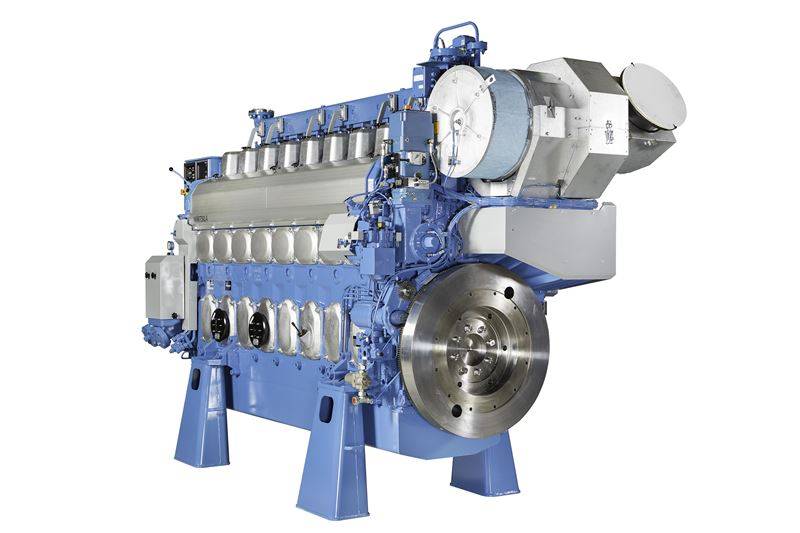Interview: Sebastiaan Bleuanus, Wärtsilä
The May 2019 edition of Maritime Reporter & Engineering News features a 10-page feature section on "Thought Leadership" in the marine power sector. Here we extract and present the interview with Sebastiaan Bleuanus, GM for research coordination and funding, Wärtsilä.
Please put in perspective and discuss the current environment and pressure to reduce emissions in the maritime industry.
The last 15 years have seen a shift in legislative focus in two main areas; a tightening of the air quality related emission limits first near densely populated areas (the Emission control areas) and now also globally through the introduction of the sulphur cap. The second area is of course the limitation of the impact of shipping on global climate change, and we have seen many measures put in place for the newbuild of vessels (EEDI) but also for vessel operation (SEEMP). And of course last year, the IMO initial strategy on greenhouse gas emissions was approved, setting ambitious goals for reducing the impact of shipping on climate change.
How does this pressure compare to the other industries you serve? What technologies or ‘lessons learned’ from other industries are you applying to maritime solutions?
In all our business areas we see and support a strive for achieving the lowest possible impact of operations. One great example is the utilization of gas as a fuel. Already a workhorse in on-shore power generation, LNG is now also rapidly gaining traction in marine transportation and with good reason. On top of the large air quality benefits (negligible particulate emissions, 90% reduced Nox and zero SOx emissions), the total global warming impact is also significantly reduced.
While I’m certain that your organization’s investment in R&D is broad and continuous, can you point to one or two areas where you are investing most heavily?
Efficiency (and thus emissions) and also flexibility. Even if the future of shipping sometimes seems less clear today than it did 10 years ago, operational and fuel flexibility remains one of the key elements to reduce investment risks in cutting edge technology. When selecting Wärtsilä as a partner, we need to ensure that our solutions work as well in the future as they do today. Flexibility is key in meeting that promise.
There is justifiably vibrant discussion surrounding fuel choice. From your discussions with your clients, do you see one fuel emerging today as the ‘next big thing?’
LNG. Like said, it brings large air quality benefits already today which improves people’s health. And there is a significant reduction in climate impact as well. Not enough to meet the IMO strategy by itself, but the beauty of LNG is that it is the perfect transition fuel. Fossil LNG can be seamlessly mixed and replaced by Bio-LNG and in the future also Synthetic LNG made from renewable hydrogen. A key aspect in this is that the supply chain for LNG is rapidly maturing. There are of course other options, but for a large scale implementation a supply chain, mature fuel storage technology, safety rules and experience and also economical aspects play a vital role. What is not to like about large benefits today and a clear path towards near-zero climate change impact?
 The Wärtsilä 20DF engine is a popular choice in LNG vessel applications. Copyright: WärtsiläFrom an Engineering, Design & Manufacturing perspective, what do you count as the biggest challenge today to produce innovative, next-generation propulsion plants that meet or beat emission regulation.
The Wärtsilä 20DF engine is a popular choice in LNG vessel applications. Copyright: WärtsiläFrom an Engineering, Design & Manufacturing perspective, what do you count as the biggest challenge today to produce innovative, next-generation propulsion plants that meet or beat emission regulation.
System integration. Besides using low net-carbon emission fuels, we need to increase ship efficiency in any way we can. Not just during seatrials, but even more in actual operation. This calls for greater system integration, system flexibility, robustness and intelligence.
The IMO last year dropped the gauntlet to reduce maritime emissions 50% by 2050. Is that target achievable, and if so, which fuels or technologies will be key to success?
These targets are definitely achievable. As mentioned above, efficiency measures and technologies on a vessel level are key to reduce the fuel consumption. It looks like such technologies can take us roughly to the 2030 target of 40% less emissions per average vessel compared to 2008. Beyond that, low net-carbon emission fuels are absolutely needed and we believe bio- and synthetic LNG, utilized in the same supply chain and vessels as today’s folssil LNG is one of the key fuels for this and also the one that meets all targets in the most economically feasible way. But of course time will tell and even if we turn out to be wrong about this, the fuel flexibility of our products will be able to utilize other fuels with high efficiency as well.
Same Question as above, but comment on the prospects of ZERO CARBON emissions?
Same answer; in practice we believe that on an average vessel level, an 80% cut in emissions is actually needed to meet the -50% on a fleet level. This is because the fleet is set to grow significantly out to 2050, and it also means that a certain amount of ships already need to be zero emission to compensate for (older) vessels that cannot economically make such deep cuts. Moving to net zero for the entire fleet then simply means removing these (older) vessels from the fleet, which will happen as and when new built replacements are made.
Please discuss a recent product (or service) introduction(s) that you see as truly transformational.
This must be our operational optimization capabilities offered through Eniram but also the Wärtsilä 31 engine. Both great examples of efficiency in action. COSL’s 12 new LNG fueled offshore support vessels will feature Wärtsilä 20DF dual-fuel engines. Copyright: COSL
COSL’s 12 new LNG fueled offshore support vessels will feature Wärtsilä 20DF dual-fuel engines. Copyright: COSL


















